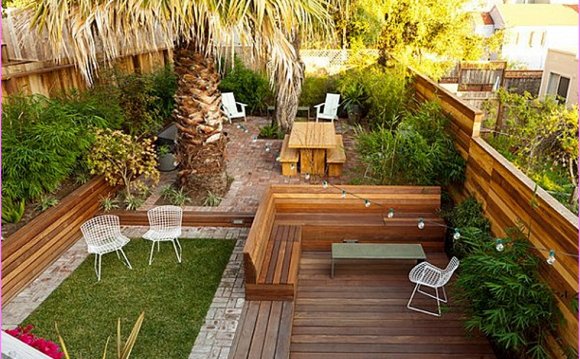
Low-maintenance gardens, drought-tolerant plants and less turfgrass have become the norm in landscape design. Homeowners now assume sustainable design will be a major part of the plan both for economic and environmental reasons. In this California design by Barbara Paul, plants were chosen not only for their gorgeous cottage-garden beauty but also for their tolerance of dry summers and wet winters.
Edibles, Front and Center
Blended gardens that incorporate edibles and ornamentals do double duty, giving gardeners a bountiful harvest of fruit, vegetables and herbs and an alternative to turfgrass. Edible gardens also create community as urban farmers share their bounty around the neighborhood.
Better Quality, Less Bling
Post-recession: Over-the-top, showy landscapes are out. Now, homeowners prefer to invest in quality and natural materials. Here, scale is key to a good design, says landscape architect Kerry Burt. The eight-foot cedar posts add heft to this arbor.
Like a Fish to Water
We love the sound of water in the garden: water features from inexpensive self-contained systems in an urn or portable fountain to a high-end water wall are popular across all budgets. Water feature designed by landscape architect Chad Robert
Indoors Ventures Outside
Thanks to new outdoor fabrics, which are made from acrylic fibers and are fade-resistant and waterproof, homeowners can create permanent living spaces outdoors with comfortable fabrics and furniture. Space designed by Scott Cohen
The Birds and the Bees
It's back-to-the-earth functionality in more and more backyards. Besides figuring out how to incorporate veggie gardens and fruit trees into the landscape, some homeowners are also adding chickens and bees.
Going Green
One of the ecofriendly elements of the HGTV Green Home 2012 is the barbecue courtyard. Born of architect Steve Kemp's vision for a truly green design, the outdoor space replaces the conventional backyard, which would have required major regrading of the site and the construction of retaining walls. "Now the 'yard' is open to almost every room in the house, rather than being open to one or two rooms, " he says.















